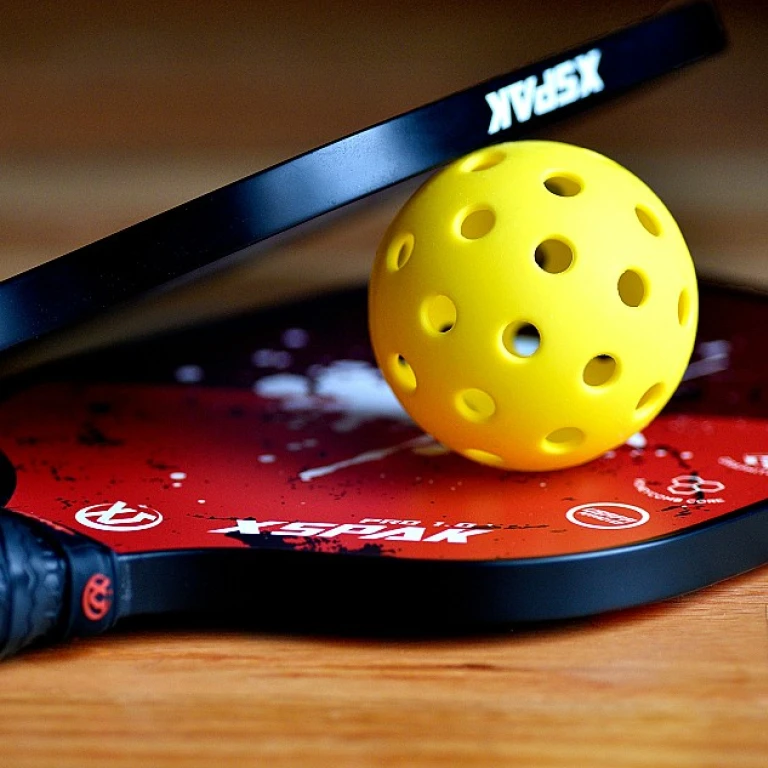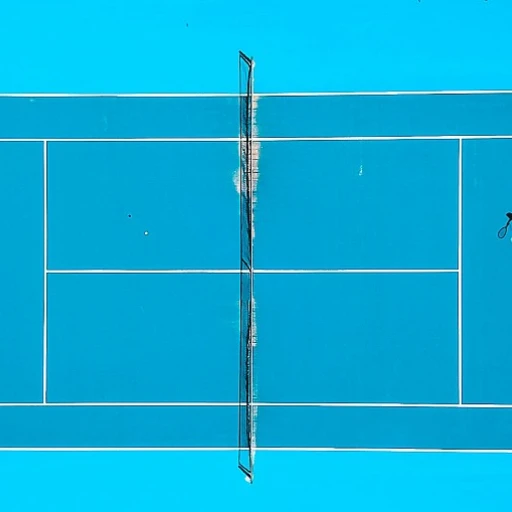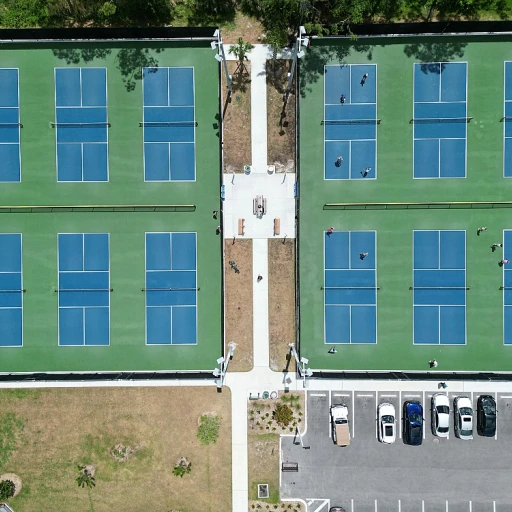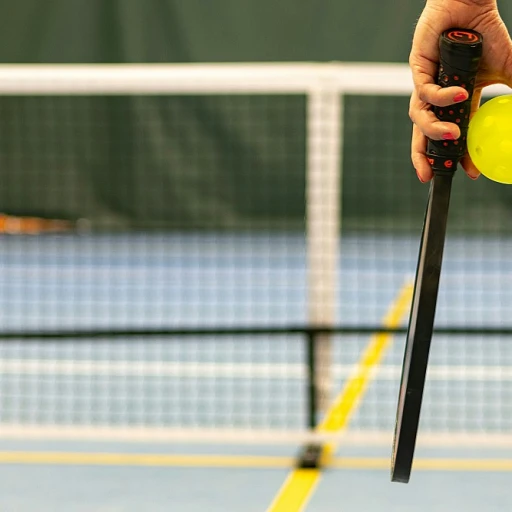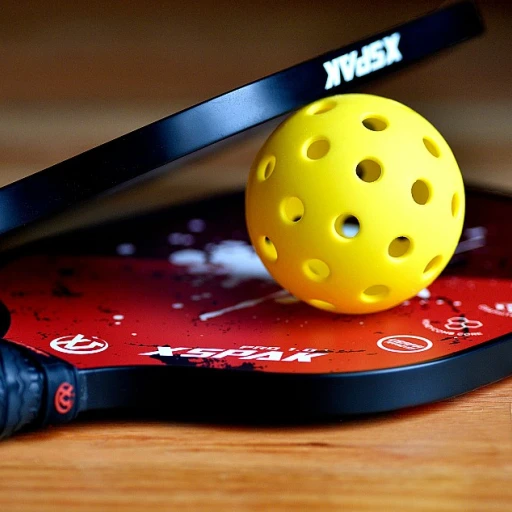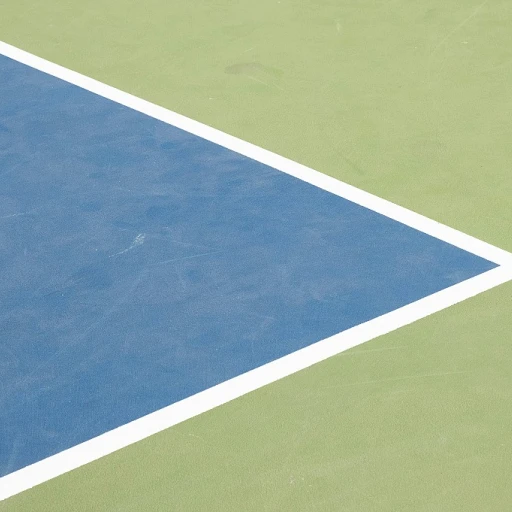
Understanding the Eastern Grip
Getting a Handle on the Basics
The Eastern grip is a fundamental technique for pickleball players looking to improve their control and power over various shots. This grip involves positioning the hand onto the paddle handle, similar to shaking hands with it. Players will typically place their index knuckle and the heel of their hand on the same bevel of the handle. The advantage of this grip is its simplicity and adaptability, allowing for a balanced forehand and backhand grip, enhancing overall game play. As players become more comfortable with the paddle face orientation, they'll find increased consistency in executing shots like topspin forehands and solid backhand shots. Understanding grip variations, such as the continental or western grip, provides players with a broader perspective on paddle handling. However, the eastern grip remains a cornerstone, offering a blend of power and control. For players focused on elevating their opening play, a comprehensive understanding of various grip techniques, including the eastern, is essential. Discover more about serving strategies in pickleball by exploring this guide on mastering pickleball serve strategies.Benefits of Using the Eastern Grip
Advantages of the Eastern Grip in Pickleball
The Eastern grip is a popular choice among pickleball players for several reasons. This grip, which involves holding the paddle with the base knuckle of the index finger on the third bevel of the paddle handle, offers a balance between control and power. Here’s why many players prefer it:
- Enhanced Control: The Eastern grip provides excellent control over the paddle face, allowing players to execute precise shots. This is particularly beneficial for forehand shots, where maintaining control is crucial for accuracy.
- Versatility in Shots: With this grip, players can easily transition between forehand and backhand shots. The grip allows for a smooth switch, making it easier to handle different types of shots during a game.
- Effective Topspin: The Eastern grip is ideal for generating topspin on the ball. This can be a game-changer, as topspin helps in keeping the ball low and fast, making it difficult for opponents to return.
- Comfortable for Beginners: Many beginners find the Eastern grip more comfortable compared to other grips like the continental or western. It offers a natural feel, making it easier to learn and master the basics of pickleball.
- Powerful Forehand: This grip is particularly effective for forehand shots, providing the necessary power and control to dominate the game. The grip's position allows players to leverage their wrist and arm strength effectively.
While the Eastern grip offers numerous benefits, it’s important to understand the challenges and adjustments that come with it. For those looking to improve their serve strategies, exploring different grips can be a valuable part of your training. Learn more about mastering pickleball serve strategies to elevate your opening play.
Challenges and Adjustments
Overcoming Obstacles When Adopting the Eastern Grip
Adapting to the eastern grip in pickleball might initially seem challenging for players accustomed to alternative grips like the continental or the western. With the eastern forehand grip, players hold the paddle as if shaking hands, which might feel awkward at first compared to the more closed continental or semi western grips.
Adjusting your grip for various shots is crucial. The eastern grip offers excellent control, but transitioning to execute a backhand can initially require a grip adjustment. Players accustomed to a backhand grip with the paddle face more vertical might find this change challenging, though manageable with practice.
- Weakness Against Spin and Height: The main drawback of the eastern grip lies in its basic nature. Generating topspin can be limited due to the open paddle face, which could be less effective in defensive shots against high balls with heavy topspin.
- Adapting Hand and Wrist Movements: Holding the paddle in an eastern grip means you might need to adjust wrist movements. The wrist stays more locked compared to the continental eastern combination, affecting agility and precise power shots.
Correcting these adjustments can unlock the grip's full potential. By practicing specific shots and getting familiar with the paddle handle, you will discover how the eastern grip can bridge the gap between power and control in your game.
Techniques for Effective Use
Maximize Your Court Impact with Effective Eastern Grip Techniques
To fully capitalize on the benefits of the Eastern grip in pickleball, players need to finely tune their technique. Understanding how to manipulate the paddle and harness the unique attributes of this grip can lead to significant improvements in both control and power. To start, when holding the paddle with an Eastern grip, ensure your hand is positioned on the handle for optimal control. Aligning your knuckles properly across the paddle will allow for a natural and firm grip, enhancing shot accuracy. The positioning is key to maintaining a stable connection between the hand and the paddle handle, enabling quick adjustments during the game. When deploying the Eastern forehand, it's crucial to utilize the paddle face effectively. By angling it correctly, players can achieve better topspin on their shots. This can be particularly advantageous when aiming to increase shot depth and unpredictability, aiming to outmaneuver opponents. Backhand shots can be executed with finesse by incorporating slight modifications in the way the grip is held. While traditionally a weaker point for players using an Eastern grip, focusing on wrist and arm motion improvements can help you command better control and power. Those transitioning between different grips, like continental and Western, must carefully modulate their technique to ensure smooth adaptations. Practicing with forehand and backhand drills while using the Eastern grip can expound upon the grip’s advantages, pushing one's game further. For players intending to master this approach comprehensively, blending these techniques into their style is essential. As the game evolves, having a flexible grip approach will prepare players for varying challenges during competitive play, and may contribute to strong performances. Embracing these nuances can dramatically elevate both your strategy and execution, sharpening your overall efficiency on the court.Comparing Grips: Eastern vs. Others
Contrast in Play: Eastern and Other Grips
In the dynamic landscape of pickleball, players often find themselves comparing various grips to determine what works best for their style. The Eastern grip, characterized by its straightforward stance, is commonly contrasted with the Western grip and the Continental grip. Each has distinct advantages depending on the desired tactic or shot in a game.
Starting with the Eastern forehand, this grip provides an excellent balance of control and power. When compared to the Western grip, it allows for a quicker transition to backhand shots because of its versatile positioning on the paddle handle. The Eastern grip is situated between the Western's extreme topspin orientation and the Continental's more neutral approach, giving players the flexibility to execute both topspin and flat shots effectively.
The continental grip, often referred to as the "go-to" for many players, emphasizes a more rounded use of the paddle which can be highly effective for precise shots and serves. Meanwhile, the Western grip's focus leans heavily on generating topspin and less on quick adaptation between forehand backhand maneuvers. Because of this, transitioning between the grip eastern and other grips can offer a rich variety to one's play style, allowing for seamless switches during the heat of a match.
The choice of grip significantly influences gameplay, guiding how the paddle face meets the ball. With the grip Eastern, stakeholders in the sport recognize how it balances the essentials needed for diverse strategic approaches. The orientation of the hand on the paddle handle allows for precision, making it a preferred grip for those looking to sustain a competitive edge in their pickleball matches.
Expert Tips and Player Insights
Professional Insights for Mastering the Eastern Grip
When it comes to mastering the eastern grip in pickleball, tapping into expert tips and player insights can significantly enhance your game. Many players who have perfected this grip emphasize the importance of grip comfort and handle control. Ensuring that the paddle handle fits comfortably in your hand with the eastern grip will enhance control and precision.
One of the keys to success with the eastern grip is understanding its versatility. It offers a balance between power and control, suitable for both forehand and backhand shots. Players have experienced improved topspin and consistency in their forehand shots, leading to more effective gameplay.
Compared to other grips, the eastern grip provides a more natural angle for hitting the ball, which many players find advantageous. This can be particularly beneficial for those who also rely on the continental or semi-western grips in certain scenarios during a match.
Players also stress the importance of having a flexible mindset and being open to adjustments. During different stages of the game, experimenting with the paddle face angle can lead to discovering the sweet spot of the eastern grip.
In terms of control and precision, the eastern grip is prized for being less awkward than the western grip and offering more power than a continental grip. Players frequently mention that correctly holding the paddle affects not only shot execution but also the fluidity of switching grips during games.

